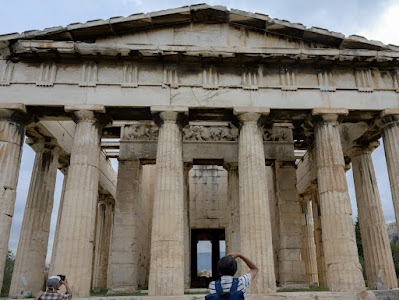Road to the isles, a walk to St Blane's church
Bute does not lack for ruined churches and chapels. On our second day we drove to the very south of the peninsula that Kilchattan Bay stands on, as far as we could go, where there was a small lay-by for parking. It so happened that the land we were on belonged to our landlord who was out and about on a quad bike.
From the lay-by it is a walk of around 20 minutes uphill to reach the church. Alan's Mum struggled up the incline and found a bench by the church where she could sit and take in the view. Here are a few pictures of the walk up.
From the lay-by it is a walk of around 20 minutes uphill to reach the church. Alan's Mum struggled up the incline and found a bench by the church where she could sit and take in the view. Here are a few pictures of the walk up.
At the top you pass by a pleasant grove of trees before reaching the church.
Parts of the building date back to 1135 and may have originally been Norse. It was the abbey belonging to a Cluniac monastery, all traces of which have now gone and St Blane was purportedly buried here in around 630AD. Story has it that he originally came from Bute and was sent across to Ireland to gain a religious education, returning to Bute in a boat without oars. After a visit to Rome and the performance of several miracles he returned to this site, where a monastery was founded and then razed to the ground by the Vikings in 790AD. Norse converts then rebuilt it in around 930AD.
The building served as a parish church until the roof blew off in a gale in December 1675 never to be replaced although the Victorians heavily restored the remaining walls.
The church is surrounded by two walls or cashels, forming the graveyards. Apparently women were buried in the lower one, unusual as the sexes are not usually segregated in death. Many of the graves are medieval with a couple of viking style tombs dating from the 9th and 10th centuries.
The walls had good crannies for plants to grow. Here is ivy-leaved toadflax.



















Comments
Post a Comment